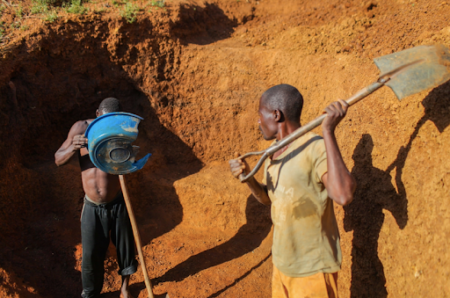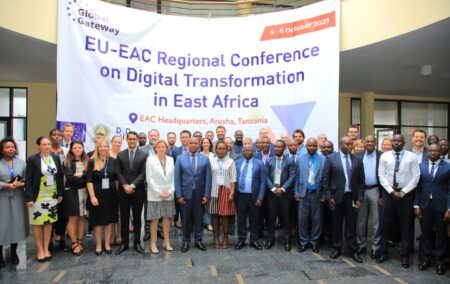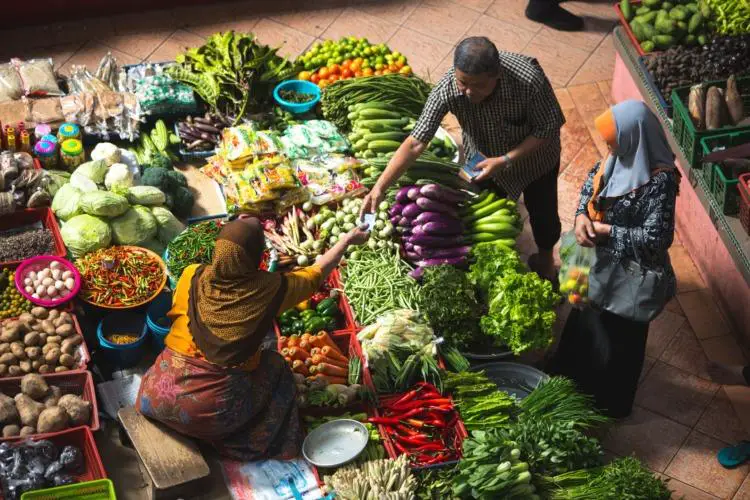- Central Bank of Kenya (CBK) data shows remittance inflows in March hit $357.0 million compared to $309.2 million in February, an increase of 15.5 percent.
- Kenyans living and working abroad sent home $349.4 million in January, with the February figure being the lowest receipt since July last year.
- The cumulative inflows for the 12 months to March 2023 totaled $4 billion compared to $3.9 billion in a similar period in 2022.
Kenyans in the diaspora sent home more money in the month of March compared to February and January, defying inflationary pressures being felt by households across the globe.
Central Bank of Kenya (CBK) data shows remittance inflows in March totaled $357.0 million compared to $309.2 million in February, an increase of 15.5 percent.
The inflows were $349.4 million in January, with the February figure being the lowest receipt since July last year.
The cumulative inflows for the 12 months to March 2023 totaled $4 billion compared to $3.9 billion in a similar period in 2022.
“The remittance inflows continue to support the current account and the foreign exchange market,” CBK notes in its weekly bulletin.
The country’s forex reserves have been falling in recent months, dropping to a 10-year low in February.
As of last week, reserves were at $6.3 billion down from $6.6 billion the previous week, as the country continued to feel pressure on dollar-denominated foreign loans which have fallen due, where the government has had to dig into the reserves to repay. This, as the Kenyan shilling continues to remain vulnerable to the dollar, exchanging at an average 135 units to a dollar.
“We expect the Shilling to continue weakening towards month-end as importers close transactions, with support from central bank forex reserves dwindling, sufficient for only 3.6 months of import cover,” notes Terry Karanja, Senior Treasury Associate, AZA Finance.
Funding squeeze
Persistent global inflation and tighter monetary policies have led to higher borrowing costs for Sub-Saharan African countries and have placed greater pressure on exchange rates. Indeed, no country has been able to issue a Eurobond since spring 2022.
The interest burden on public debt is rising, owing to a greater reliance on expensive market-based funding combined with a long-term decline in aid budgets. The lack of financing affects a region that is already struggling with elevated macroeconomic imbalances.
“Public debt and inflation are at levels not seen in decades, with double-digit inflation present in about half of the countries—eroding household purchasing power and striking at the most vulnerable,” the International Monetary Fund (IMF) says.
In this context, the economic recovery has been interrupted. Growth in sub-Saharan Africa will decline to 3.6 percent this year, according to IMF. Amid a global slowdown, activity is expected to decelerate for a second year in a row.
Still, this headline figure masks significant variation across the region. The funding squeeze will also impact the region’s longer-term outlook.
A shortage of funding may force countries to reduce resources for critical development sectors like health, education, and infrastructure, weakening the region’s growth potential.
The increase on remittances is, however, a sigh of relief as they go a long way in boosting the forex reserves. The US remains the largest source of remittances into Kenya, accounting for 58 percent, CBK notes.
Surviving to send home
A study by global payment firm-WorldRemit revealed that Kenyans living and working abroad have had to cut on their spending to manage sending some money back home.
This is on the back of the high inflation across economies, with the US, which is the leading source of remittances, recording a four-decade high inflation of 9.1 per cent last year.
Massive job cuts have also become imminent amid fears of recession. Despite this, migrant workers continue to send money back home.
The survey conducted in June shows 49 per cent of respondents reported that they eat out less, 46 per cent save on day-to-day expenses, while 28 per cent have limited social gatherings to save money.
About 25 per cent of the respondents said they have opted for public transportation rather than driving to save, part of which has seen them continue to support families and friends back at home.
“Migrants’ resilience and commitment to their loved ones back home has proven to be vital, especially in a period where household expenses are increasing around the world,” said Jorge Godinez Reyes, Head of the Americas, WorldRemit.
This study proves that even during times of financial instability, many migrants are making adjustments to maintain the regular flow of remittances to families and loved ones back home, Reyes noted.
Read also: Rising interest rates leave South Africans nursing big headache
Majority (52 percent) however said they send money to fewer people due to the tough economic times.
The survey involved 3,000 international money senders living in the USA, Australia, and the United Kingdom, aged 18 years and above.
They voluntarily responded to a 13-question survey about how cost of living and inflation has changed behaviours when it comes to sending remittances.
WorldRemit, which serves more than five million customers across 130 countries worldwide, including Kenya, received responses from 1,000 migrants in each of the countries surveyed, bringing the total number of respondents to 3,000.
Globally, 78 percent of remittance senders agree that the cost of living has personally affected them, the survey released yesterday notes.
About 75 percent of respondents said that the cost of living for those they send money to has increased since last year. In 2023, remittances are projected to decline by one due to weaker conditions in migrants’ destination countries.
Remittances to the developing countries of the Middle East and North Africa are estimated to have grown 2.5 percent in 2022 to $63 billion, compared to a 10.5 percent growth the previous year.
Slower growth in remittances is partly tied to the erosion of real wage gains in the Euroarea, even as demand for remittances in home countries increased amid deteriorating conditions, including drought in the Maghreb and high imported wheat prices.
Remittances to Sub-Saharan Africa, the region most highly exposed to the effects of the global crisis, grew an estimated 5.2 percent to $53 billion in 2022, compared with 16.4 percent previous year, mainly due to strong flows to Nigeria and Kenya.
Remittances in 2023 are projected to soften to 3.9 percent growth as adverse conditions in the global environment and regional source countries persist. Remittances as a share of GDP are significant in the Gambia (28 percent), Lesotho (21 percent), and Comoros (20 percent).
Global growth outlook
The IMF announced last week in a World Economic Outlook’s press briefing that the baseline forecast for global output growth is 0.1 percentage point lower than predicted in the January 2023 WEO Update, before rising to 3.0 percent next year.
“The world economy is still recovering from the unprecedented upheavals of the last three years, and the recent banking turmoil has increased uncertainties. We expect global output growth to fall from 3.4 per cent last year to 2.8 percent in 2023, before rising to three in 2024, mostly unchanged from our January projections,” IMF said.
Advanced economies are expected to see an especially pronounced growth slowdown from 2.7 percent in 2022 to 1.3 percent in 2023.
Global headline inflation is set to fall from 8.7 percent in 2022 to seven in 2023 on the back of lower commodity prices but underlying core inflation is proving to be stickier.
“Importantly, this outlook assumes that recent financial stresses remain contained,” said Pierre-Olivier Gourinchas, the IMF’s Chief Economist.
Much uncertainty clouds the short- and medium-term outlook as the global economy adjusts to the shocks of 2020–22 and the recent financial sector turmoil.
Recession concerns have gained prominence, while worries about stubbornly high inflation persist.
“Once again, risks are heavily tilted to the downside, they have risen with the recent financial turmoil. Most prominently, recent banking system turbulence could result in a sharper and more persistent tightening of global financial conditions,” Gourinchas added.
The simultaneous rate hikes across countries could have more contractionary effects than expected, especially as debt levels are at historical highs.
There might be a need for more monetary tightening if inflation remains stickier than expected, Economists at IMF noted.
These risks and more could all materialise at a time when policymakers face much more limited policy space to offset negative shocks, especially in low-income countries.
With the fog around current and prospective economic conditions thickening, policymakers have a narrow path to walk towards restoring price stability while avoiding a recession and maintaining financial stability.
Achieving strong, sustainable, and inclusive growth will require policymakers to stay agile and be ready to adjust as information becomes available.
“First, as long as financial stress is not systemic as it is now, the fight against inflation should remain the priority for central banks. Second, to safeguard financial stability, central banks should use separate tools and communicate their objectives clearly to avoid unwarranted volatility,” said Gourinchas.
Financial policies should remain laser focused on preserving financial stability and watch for any buildup of risks in banks, non-banks, and the real estate sectors.
Third, in many countries fiscal policy should tighten to ease inflation pressures, restore debt sustainability, and rebuild fiscal buffers.
“Finally, in the event of capital outflows that raise financial stability risks, emerging market and developing economies should use the integrated policy framework, combining temporary targeted foreign exchange interventions and capital flow measures where appropriate,” said Gourinchas.










